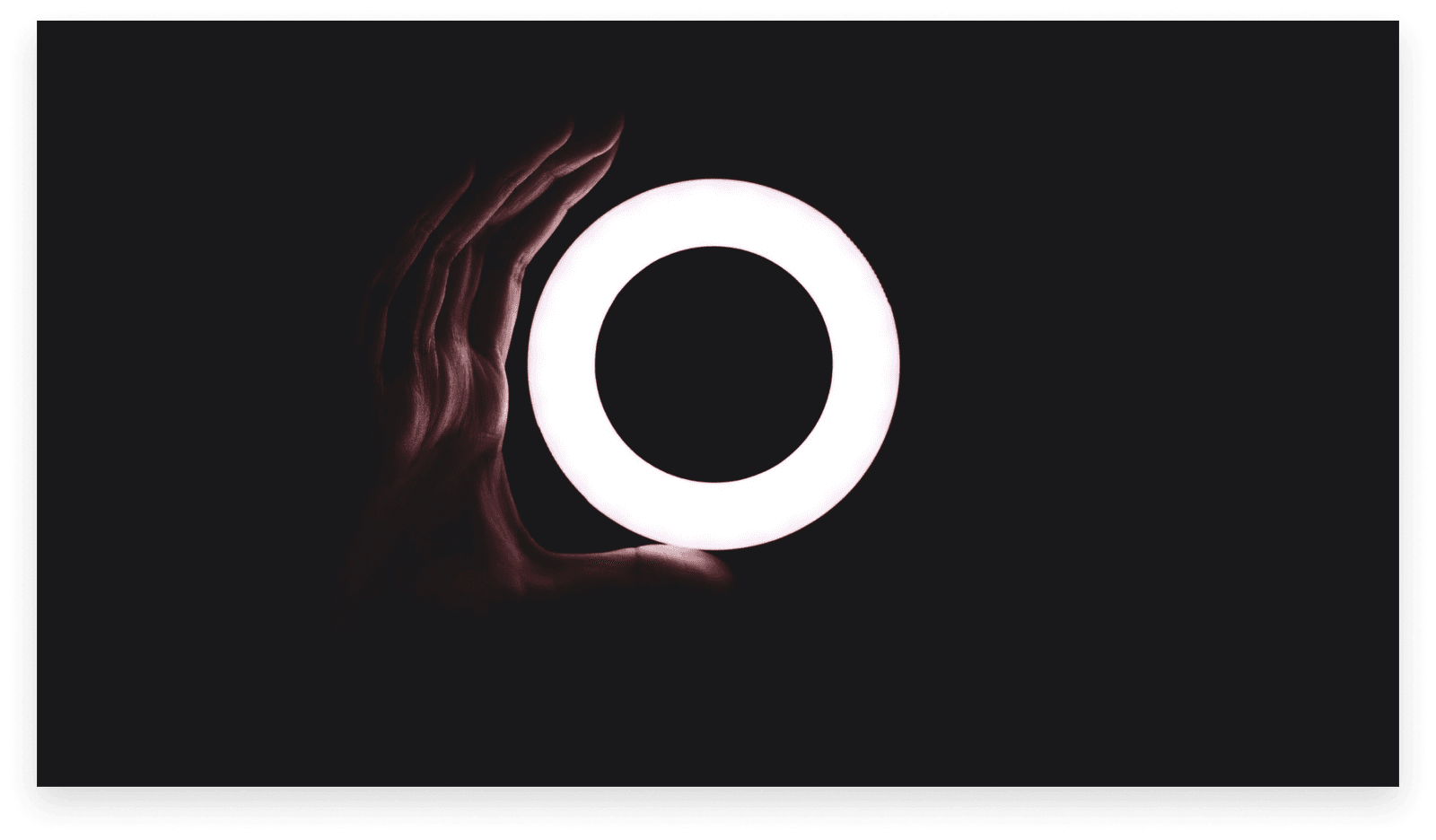
March 13, 2023
UX design tips for blockchain offerings: Making complexity simple
UX design is an integral part of any product offering whether it regards the product or service proposition. Blockchain is truly a breakthrough technology that simplifies business workflows and provides increased security, and transparency. Blockchain projects aren’t an exception when we speak about flawless user journeys and friendly design. Considering that many people don’t always understand this technology, it is crucial to present it in an elegant and simple manner so that all users will be able to seamlessly enjoy its core benefits. Hence, UX design makes a significant impact on how well the blockchain product will be understood and how friendly it will be in use.
What Is Blockchain About?
Blockchain is a distributed ledger technology that might seem complex from a regular user’s point of view. In case you’re not working with blockchain, then you’ll probably not understand its specific peculiarities in terms of computing power used, smart-contract logic, or operational flow at the core of a blockchain-based product. The fact is that such information is relevant to people and businesses who are building their products on top of the blockchain, whereas a common user doesn’t need to understand what exactly happens behind the scenes. What an end-user need is a simplicity and understanding of how to use a product in order to satisfy his needs. And that’s what the blockchain was built for:
- for more efficient deal settlement,
- faster and secure funds exchange,
- transparency, and, of course,
- cost-efficiency.
In fact, blockchain doesn’t stand for a product or service, but a technology that makes its functionality better. It allows the management and storage of data and information in an accessible and transparent manner. Such data can be any activity within a certain product offering, whether it is purchasing history, payments, transactions, or information exchange.
Blockchain is like a book where every page with information is a separate block with records. Any transaction or activity that happens within a blockchain is written into a block that is connected with others in a consecutive manner, just like a book consists of pages. The peculiarity of the blockchain network is that such data storage is immutable meaning that since any action or deal happened, a created record can’t be deleted or forged.

This technology is beneficial within the financial sphere, trading, e-commerce, supply chain, and many more. In order to execute a trustful deal, blockchain uses smart contracts - digital agreements written as a code that includes conditions under which a deal can be met between two or more parties. As everything is digitalized and automated, a deal can happen only since the predefined conditions are met. Another important part of the blockchain is the funds’ movement for which people can use credit cards and fiat (regular money such as USD, UAH), cryptocurrency (Ether, Bitcoin, Tether), or tokens (digital assets representing the value or intellectual property rights). The fact that there is no third party or middlemen involved makes any payment or purchase proceed faster and without excessive fees.
Due to transparency, security, speed of transactions, elimination of middlemen, and financial freedom, blockchain is often used by many projects to enhance their workflows and ensure trust between projects and users.
Where Is The Challenge?
The challenge lies in the lack of understanding. The reason why certain blockchain-based products and services are hard to comprehend is the complexity of the “under the hood” functionality. Before understanding the true potential of the offering, a common user is forced to really deep dive into the technology concepts and their peculiarities. The truth is that an end-user doesn’t need to read the code or understand whether he is working with the Bitcoin blockchain, private or public ledgers and how his transaction is processed in terms of proof of work or their consensus-reaching algorithms. A user needs to know how exactly to interact with the product, how to purchase things, use services, or send someone funds in a secure manner. That is exactly when smart UX and UI design should come into place. A friendly and comprehensive user journey is the core focus while building UX. Understanding an end-user, his/her preferences, knowledge background, goals and needs will help to build a product that is simple and functional in use.
Artkai offers UX/UI services for enhancing the product’s functionality and increasing its conversion, multiple leads, purchases, subscriptions, and registrations without radical changes in existing design and business processes. In addition, competitive analysis and business metrics evaluation help while enhancing the overall user experience design. Artkai UX specialists always conduct a research-based approach as the definition of main goals and elimination of pain points ensure understanding of user needs as well as map product features to them.
According to Don Norman, “Good design is actually a lot harder to notice than poor design, in part because good designs fit our needs so well that the design is invisible.” In fact, when the blockchain-based product is well-designed, a user won’t even see a difference from other offerings. He will enjoy the benefits he gets from the technology in terms of efficiency, transparency, and security.
The lack of on-boarding is another common problem in blockchain-based projects. As a larger segment of the target audience isn’t usually familiar with the technology, it is highly important to explain core processes and provide an onboarding explanation of what exactly is happening, how to use this product, and what happens with the data a user is sharing. If this is a financial application, it is important to explain where to start, how to send funds, what various numbers mean, and of course, where to track the history of transactions. If we are speaking about the e-commerce application, it is also crucial to explain how to use a wallet, how to purchase things with various currencies, and where the rewards and history of purchases will be accessible.
Too much specific jargon happens to be a barrier as well. When a common user sees too many words and instructions that he does not understand, he’ll get frustrated and probably won’t continue working with such a product. In this case, it is important to simplify the language, add more informative clues, and help a user proceed to his main goal. If we are speaking about payments and tokens, it is important to let a user know that fiat is regular currency, and a utility ERC20 reward token is just the reward he’ll find in his wallet for making more purchases and being active, for instance. All in all, it comes to how a product is presented and to the simplicity of its interface.
Building UX Design: A Few Tips on How To Simplify the User Journey
As in every other project, the term user experience (UX) combines the principles of business analysis, research, and product discovery to propose valuable, simple, and functional product design. In terms of product discovery, it is crucial to understand what is the product’s unique offering, how it stands out from the others, and what beneficial features it provides to its users. Market validation and competitive analysis is a must-have stage to understand the value of the business proposition and define how exactly it should be presented to reach the market fit and stay in demand.
User research and target audience definition is another crucial aspect while a research-based design. To build a comprehensive and friendly user-centered design, it is important to know who a target user is, and what his goals, needs, fears, and preferences are. The evaluation of the level of knowledge about a blockchain will help to present the user journey in the most comprehensive manner, making the user/platform interaction design as friendly and seamless as possible.
Here are a few tips on how to build a comprehensive UX in a blockchain-based project:
Start with a prototype or an MVP. Explain the benefits of using a blockchain while focusing on the core functionality. Choose the most needed features and apply them in the UX customer journey. It is always important to design the platform/customer interaction thinking about the preferences and needs of a customer. Where is the main value, how to impact the best experience, and how to eliminate any complexity - these are the main questions to consider. The benefit of prototyping and MVPs is that these are pilot product launches, they will help to get feedback from the users in order to make further improvements in full product development.
Do not show results and deal with outcomes in code. It is important to turn coding or smart-contract functionality into visual feedback or friendly informative notice. Since the back-end would be processing complex smart-contract logic sending requests, listening information, and storing data records, a user will have to be notified of what exactly is happening. Translating complex computations and visualizing the operational flow to a user will help him understand what actions he/she has done and what would happen next.
While building clear and consistent UX/UI design pay attention to such key factors as:
- user types
- their roles and management peculiarities
- system feedback and notifications
- deal states
- records and audits of various actions
- verification and validation procedures
As long as the blockchain functionality is closely tied to the UX, a product will have a great chance for success. Artkai, in turn, always conducts precise research and market evaluation before building any functional and visual design. Hypothesis testing, prototyping, and proof of concept development are strongly beneficial in terms of reaching a good market fit. Having assisted in the development of a number of cryptocurrency-related projects, a team of UX/UI experts will be happy to help with smart and efficient design.
Conclusion
Although blockchain is a progressive technology, it is often considered to be complex. Blockchain-based projects rarely boast their user-friendliness and comprehension in terms of use. Hence, building a smart and seamless UX experience that is based on research and analysis is inevitable while launching a successful product offering.
Clients and Results
Schedule your free consultation
Don't miss this opportunity to explore the best path for your product. We are ready to delve into the specifics of your project, providing you with expert insights and optimal solutions.
Book your free sessionRead More
Explore articles from Artkai - we have lots of stories to tell
Join us to do the best work of your life
Together we advance the human experience through design.